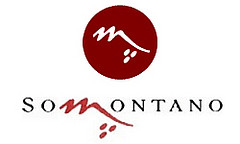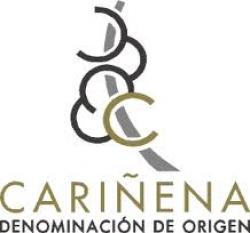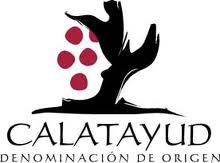Aragon DOs

Aragon lies in the northeast of Spain, right along the center of the Ebro Valley which runs encased by the beginnings of two important mountain ranges: the Pyrenees in the north and the Iberic System in the south. Because of this, the climate in Aragon changes drastically from one part to another, meaning the temperature can be subzero in the areas closer to the Pyrenees while those closer to the Monegros desert could be suffering from unbearable heat. Although Aragon is not a very popular tourist destination, it's a place to consider while visiting Spain because of its cuisine, which together with the excellent variety of Aragon wines is the perfect excuse for a weekend visit. Make the most of your short visit and learn some Spanish! You will surely enjoy it, as the typical Aragon accent is very peculiar.
Vineyards in Aragon account for more than 4 billion sq. feet, of which around 60% are occupied by vineyards under the four designations of origin present in Aragon. The most typical grape used in these wines is the Crujillón or Cariñena, which gave its name to the DO Cariñena, but there are other varieties allowed, such as Juan Ibáñez, Garnacha, Parraleta, Macabeo, Alcañan, Moscatel, Tempranillo, Cabernet Sauvignon, Pinot Noir or Gewürztraminer. Aragon wines have a renowned quality, and are coveted by wine lovers all around the world.
DOs (designations of origin) of Aragon
Although the most popular DO in Aragon is the DO Somontano, there are three other designations of origin whose wines deserve at least a tasting. They might surprise you!
DO Somontano

Somontano means "at the foot of the mountain", which is the perfect way of describing the location of this small region in the middle of the province of Huesca which produces the best Aragon wines. Placed right at the foot of the Pyrenees, the vines in this area are planted in the terraces of the valleys that lead to the northern part of the Ebro Valley. The production of wine in Somontano dates back to the Romans, who started planting the vines which prospered under the care of the monks and priests who lived in Somontano during the Middle Ages. If you're traveling around Spain, you'll see this area is perfect for spending some quality nature time. The temperature is cool enough to make summer is bearable, but not so cold it will freeze your toes off. So if you're visiting, remember to bring your camping tents!
The DO Somontano was approved in 1984, making it one of the youngest DO in the area. In spite of this, the DO Somontano is recognized as one of the best DOs in Spain, and one of the most seeked after by wine lovers. The grape varieties used are Cabernet Sauvignon, Garnacha, Moristel, Parraleta, Tempranillo, Merlot, Pinot Noir and Syrah for red wine; Macabeo, Garnacha blanca, Alcañón, Chardonnay and Gewürztraminer for white wine.
The alcohol level in the wines of this DO are as follows:
- Red wine, with a minimum alcohol content between 11.5% and 14%
- White wine, with a minimum alcohol content between 10%-13%
- White wine produced with the Macabeo grape, with a minimum alcohol content of 16%
- Rosé wine, with a minimum alcohol content between 11% and 13.5%
DO Cariñena

Cariñena is known for being a pioneer in the wine sector, so saying that this city saw the birth of the Aragonese vineyards and Aragon wines is not at all far fetched. Cariñena, formerly known as Carae, was a roman city where the preferred drink was honeyed wine (this aspect of Roman life has clearly translated into Spanish culture!). The first testimonies of this come from the III century a. C. Wine was such a good business that in 1696, the Statute of the Vine was approved. This established in which areas the vineyards should be planted to obtain the best quality Aragon wines, and it was the predecessor of the present DO Cariñena, which was established in 1932.
The DO Cariñena has always been quite traditional concerning the types of grapes used in their wines. However, they have lately started using other varieties to accommodate to the evolving tastes of the consumers. This DO produces different types of wine:
- Red wine, with a minimum alcohol content of 12%
- White wine, with a minimum alcohol content of 11%
- Rosé wine, with a minimum alcohol content of 11%
- Liquor wine, with a minimum alcohol content of 15%
In relation to the ageing of the wines, there are several obligations to follow in order to classify them:
- Red wines:
- Crianza: At least 24 months of ageing, of which a minimum of 6 should be spent in an oak barrel
- Reserva: At least 36 months of ageing, of which a minimum of 12 should be spent in an oak barrel, while the remaining time should be spent bottled
- Gran Reserva: At least 60 months of ageing, of which a minimum of 18 should be spent in an oak barrel, while the remaining time should be spent bottled.
- White and Rosé wines:
- Crianza: At least 18 months of ageing, of which a minimum of 6 should be spent in an oak barrel
- Reserva: At least 24 months of ageing, of which a minimum of 6 should be spent in an oak barrel
- Gran Reserva: At least 48 months of ageing, of which a minimum of 6 should be spent in an oak barrel, while the remaining time should be spent bottled.
There are three other categories common to red, white and rosé wines:
- Añejo: At least 24 months of ageing, either in a bottle or in an oak barrel
- Noble: At least 18 months of ageing, either in a bottle or in an oak barrel
DO Calatayud

Found in the southwest of the Zaragoza province, the DO Calatayud, established in 1989, is the youngest of all the designations of origin in Aragon. This area has a very dry climate, with a lot on sun, very cold winters and big differences in temperature between day and night. This influences the ripening of the grapes so the harvesting has to be done later than in other vineyards in Aragon. Far from this being an inconvenience, it gives the DO Calatayud wines the perfect balance between alcohol and sweetness.
DO Calatayud produces four different types of wine:
- Red wine, with a minimum alcohol content of 12%
- White wine, with a minimum alcohol content of 10.5%
- Rosé wine, with a minimum alcohol content of 11%
DO Campo de Borja

In the northeast of the province of Zaragoza lies Campo de Borja, a small district with its own designation of origin: DO Campo de Borja. The vineyards in this area are rich in the Garnacha grape, with over 500 million square feet dedicated exclusively to this variety, with some of the vines dating back as far a 1145. Although these older vines don't produce as many grapes as the younger ones, their wines are highly valued because of the complexity and aroma the age of the plant gives the end product.
DO Campo de Borja produces mainly young red wines and rosé wines, with the production of white wines being less than 8% of the total. As mentioned above, the most popular grape in this area is the Garnacha grape which is used for red wines, although other varieties are also accepted under the DO Campo de Borja: Tempranillo, Mazuela, Cabernet, Merlot and Syrah for red wines; Macabeo, Chardonnay and Moscatel for white wines.
The alcohol level in the wines of this DO are as follows:
- Red wine, with a minimum alcohol content of 12%
- White wine, with a minimum alcohol content of 11%
- Rosé wine, with a minimum alcohol content of 11%
- Liquor wine, with a minimum alcohol content of 15%
Spanish Wine History
Spanish Wine Regions and DO
Spanish Wine Tours
Top Spanish designations of origin
Best Spanish Wines
Spanish Wine Production
Spanish Wine Types
Spanish Grapes
Spanish Sparkling Wine: Cava
Sherry Wine
Spanish Wine Cocktails
Spanish Wines in the World
Spanish Wine Prizes
Enotourism
Spanish spirits and liquors
Argentina Wines
Chilean Wines
Other sites